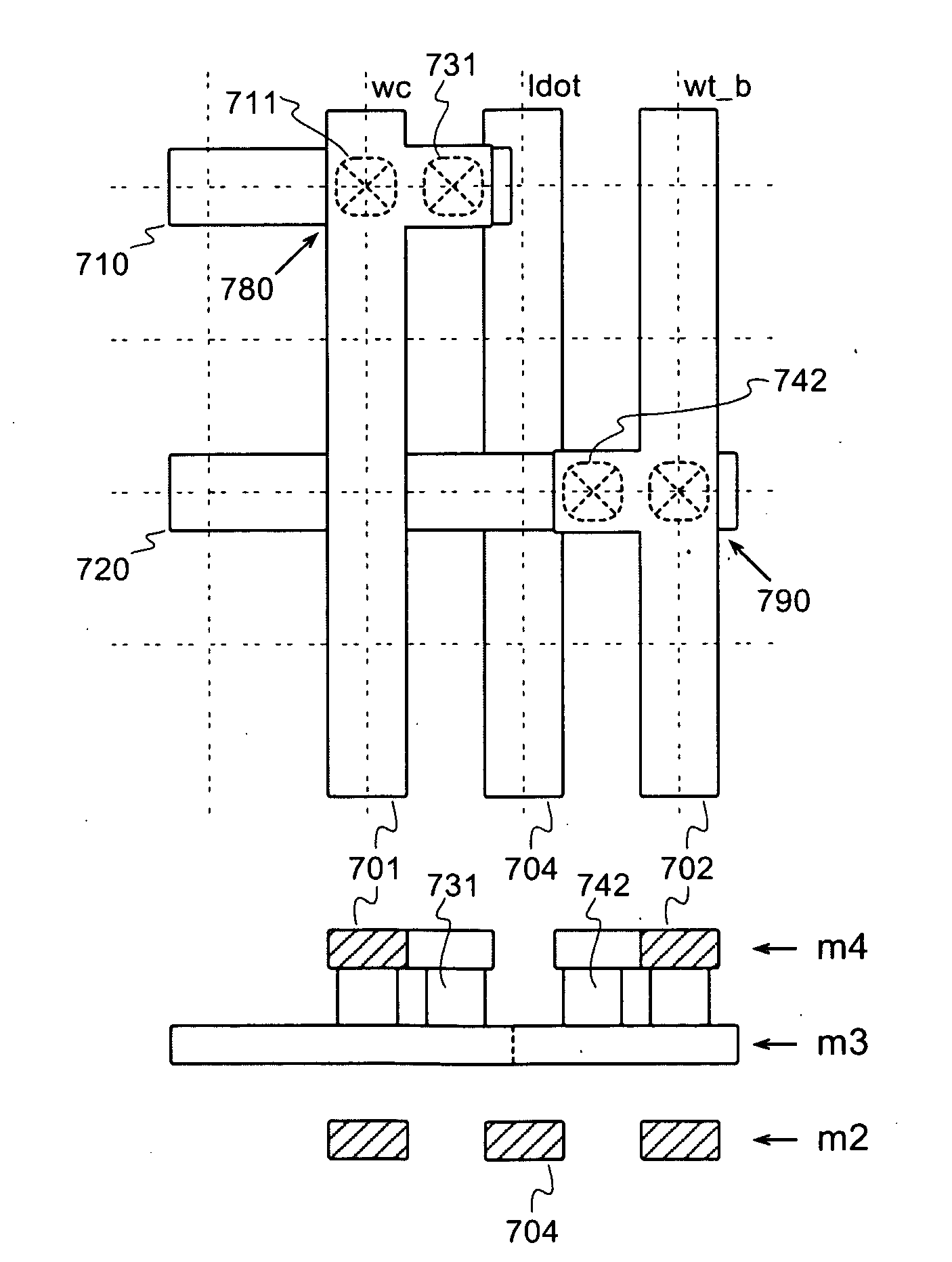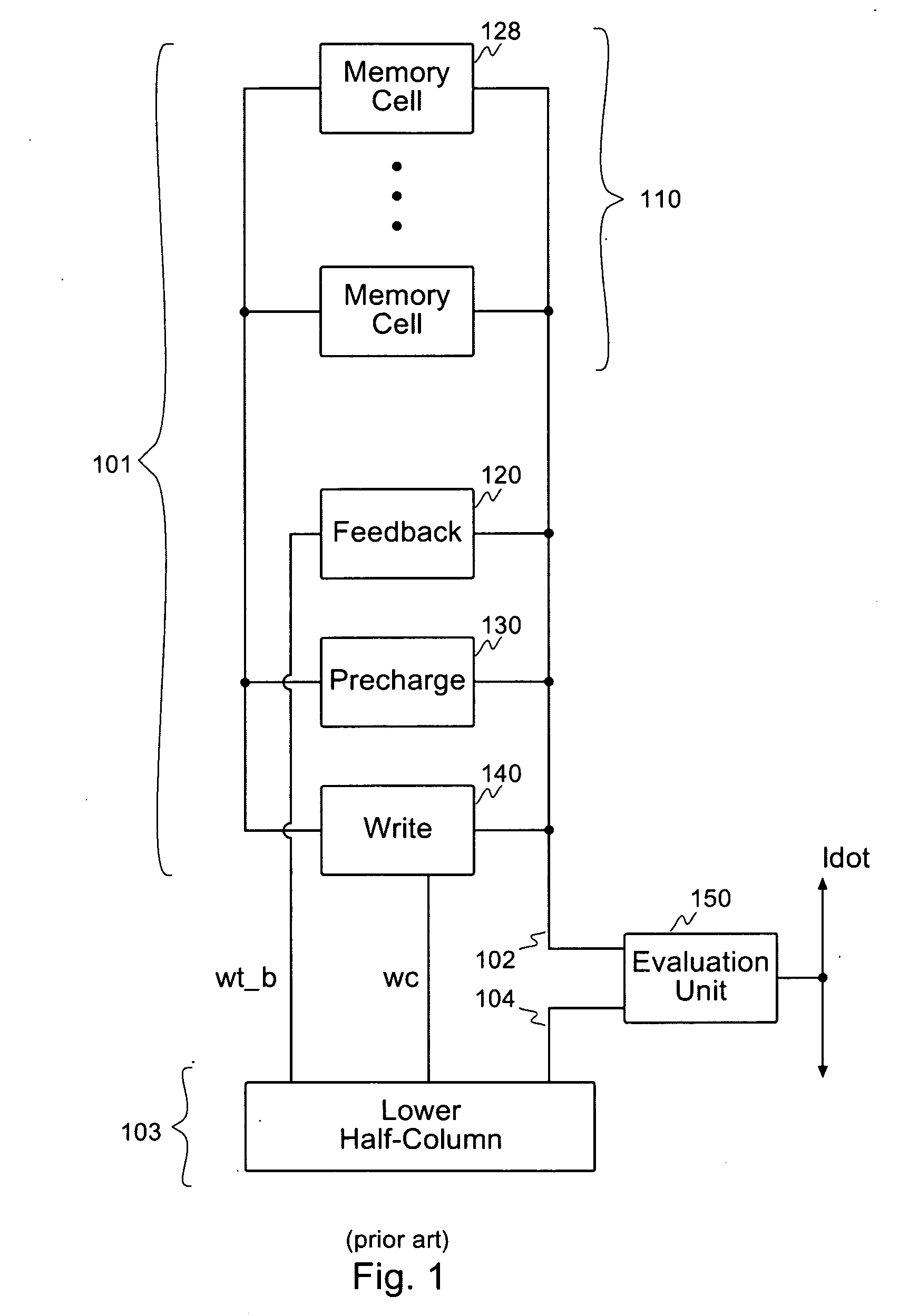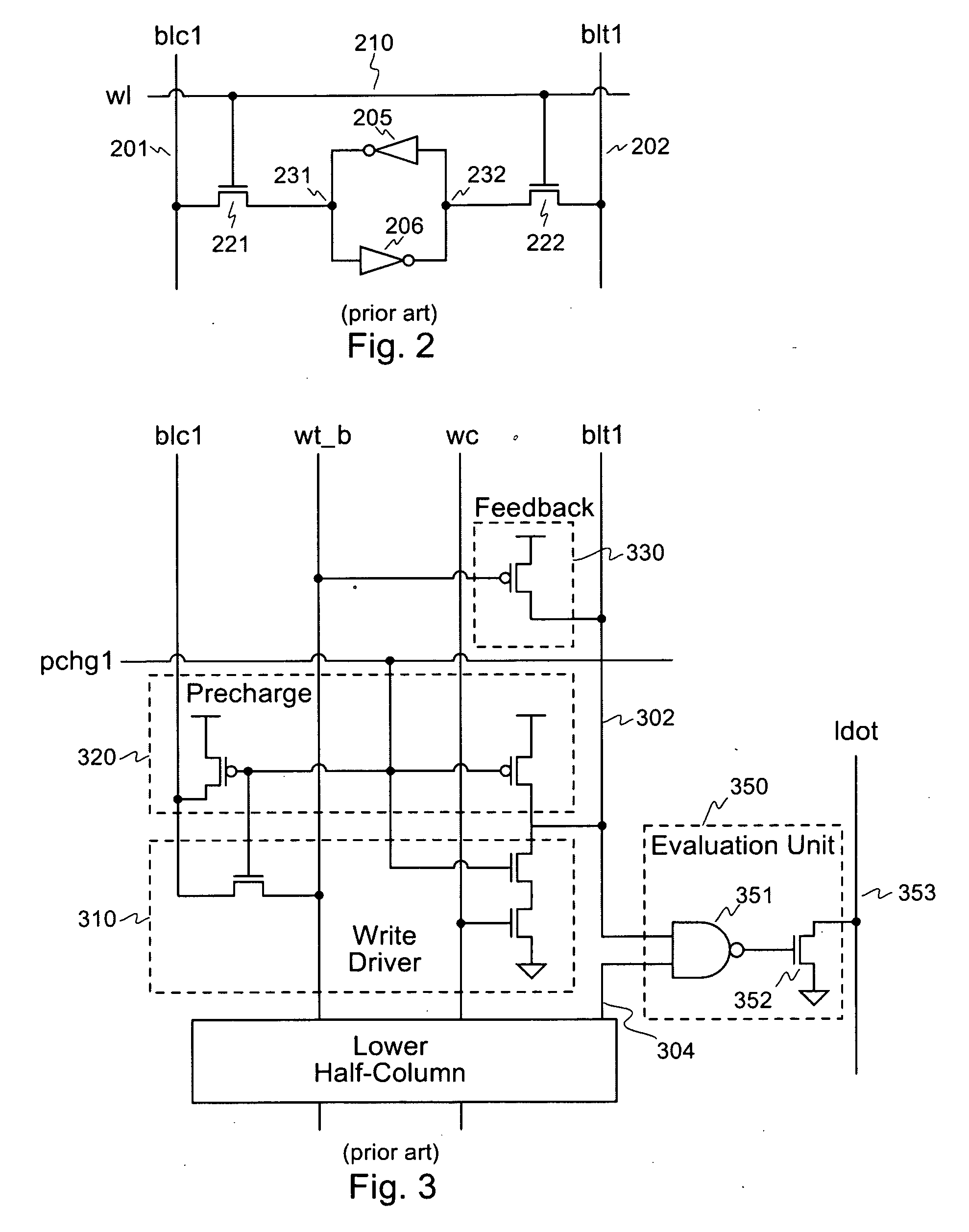Memory System Having Multiple Vias at Junctions Between Traces
- Summary
- Abstract
- Description
- Claims
- Application Information
AI Technical Summary
Benefits of technology
Problems solved by technology
Method used
Image
Examples
Embodiment Construction
[0026]One or more embodiments of the invention are described below. It should be noted that these and any other embodiments described below are exemplary and are intended to be illustrative of the invention rather than limiting.
[0027]Broadly speaking, the invention includes systems and methods for increasing the yield and reducing the capacitance associated with memory system circuits, thereby potentially increasing the speed and reducing the power required by these systems. More particularly, the system is improved by introducing additional vias between the traces of different metal layers.
[0028]An exemplary embodiment is implemented in a memory system that uses a hierarchical bit line scheme. The capacitance of some of the lines in the memory system can be reduced by adding vias between metal layers. In one embodiment, a set of SRAM memory cells is organized in an array wherein each cell is accessed / read by a bit line. Each memory cell is connected to the bit line at a correspondi...
PUM
| Property | Measurement | Unit |
|---|---|---|
| Density | aaaaa | aaaaa |
| Width | aaaaa | aaaaa |
Abstract
Description
Claims
Application Information
 Login to View More
Login to View More - R&D
- Intellectual Property
- Life Sciences
- Materials
- Tech Scout
- Unparalleled Data Quality
- Higher Quality Content
- 60% Fewer Hallucinations
Browse by: Latest US Patents, China's latest patents, Technical Efficacy Thesaurus, Application Domain, Technology Topic, Popular Technical Reports.
© 2025 PatSnap. All rights reserved.Legal|Privacy policy|Modern Slavery Act Transparency Statement|Sitemap|About US| Contact US: help@patsnap.com



